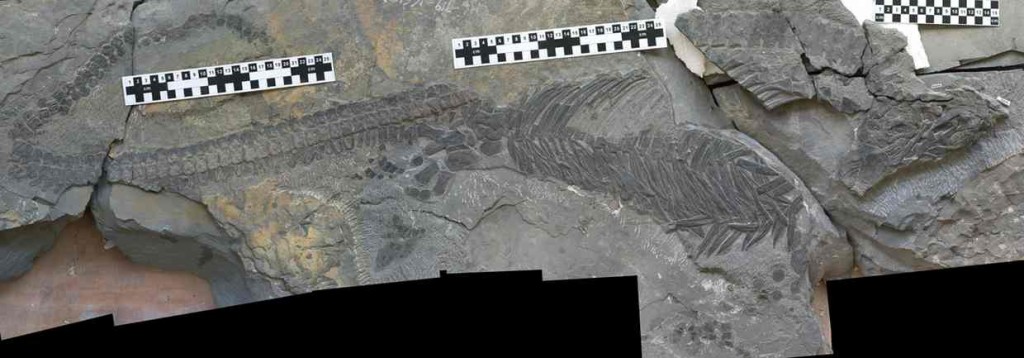May 27 2016
A Tale of Two Science News Reports

One of the recurring themes of this blog, and of the skeptical movement itself, is that science news reporting is generally poor. It is highly variable – there are some excellent science news reporters out there, but most are mediocre and some are terrible. The problem is that the average quality is simply too low.
The problem is compounded by the fact that scientists sometimes overhype or overinterpret their results, but even more common, the press office for the university at which the scientists work often sensationalize the science. At every step there is an opportunity to add hype, misinterpret the actual results, sensationalize, focus on the speculative aspect of the study rather than the actual data, or simply get the story wrong.
The race for clicks seems to be driving the quality of science reporting down, favoring clickbait headlines. Reporters don’t seem to mind getting the story wrong and then being corrected by science bloggers, for then they just get another round of clicks correcting their own bad reporting as if it were someone else’s fault.
Sclerocormus parviceps
Scientists recently discovered an icthyosaur (a large marine reptile) from shortly after the end Permian extinction event about 247 million years ago that saw the end of 94% of all species on Earth. The new species, Sclerocormus parviceps, has some surprising features.
The ichthyosauromorpha clade is characterized by having a long snout, teeth and a tail with big fins. S. parviceps has none of these features. It had no teeth, and so probably ate small invertebrates. This suggests a relatively rapid speciation of ichthyosaurs after the end Permian extinction event.
This makes sense in that the Permian extinction would have left a lot of empty niches in the ecosystem. There would have been a lot of selective pressure on surviving species to fill these empty niches. The same was true for the birds and mammals that survived the K-T extinction event about 66 million years ago.
S. parviceps is a basal ichthyosaur, occurring near the origin of this clade. What this new find suggests is that within a million years after the extinction, ichthyosaurs radiated into many forms, with only a few surviving and becoming the “typical” form of the clade. This suggests a more rapid adaptive radiation for the clade than previous fossil evidence suggested.
The authors give this summary:
It now appears that ichthyosauriforms evolved rapidly within the first one million years of their evolution, in the Spathian (Early Triassic), and their true diversity has yet to be fully uncovered. Early ichthyosauromorphs quickly became extinct near the Early-Middle Triassic boundary, during the last large environmental perturbation after the end-Permian extinction involving redox fluctuations, sea level changes and volcanism. Marine reptile faunas shifted from ichthyosauromorph-dominated to sauropterygian-dominated composition after the perturbation.
Science Reporting
The story has been widely reported in science and general new outlets. Here is an example from the Guardian. They do a great job. They link to the original study, they put the study into a reasonable context, and provide good quotes from actual scientists. The headline: New fossil find points to rapid evolution of marine reptiles after mass extinction, is also a reasonable summary of the science.
Now let’s take a look at the reporting of the same story from University Herald. Trouble starts right with the headline: Newly Discovered Dinosaur Fossil Challenges Darwin’s Theory of Evolution; Marine Reptiles Evolved More Quickly.
S. parviceps is not a dinosaur, and this new find does not challenge “Darwin’s Theory of Evolution.” Further, the statement that marine reptiles evolved more quickly is vague; more quickly than what?
The reporter, Mariel Peralta, links to the Guardian story, so she had the information. This is also not all on the headline writer. She writes:
The Sclerocormus parviceps fossil is an important piece of evidence as marine reptile fossils after the mass extinction era are rare, according to dinosaur experts, Discovery News noted. Furthermore, it challenges Charles Darwin’s Evolution theory where species are supposed to evolve gradually over time. However, the fossil evidence seems to say otherwise.
Do you think the discovery of the Sclerocormus parviceps fossil challenges Darwin’s theory of evolution? Let us know what you think in the comments below.
She makes the dinosaur mistake plus introduces the idea that this fossil challenges Darwin somehow. The reporting is so bad that I suspected the outlet was a creationist front, but that does not seem to be the case (or it is just well concealed).
She also writes:
Furthermore, scientists were amazed at the 1.6-metre length of the dinosaur as it appeared just after the mass extinction of the dinosaurs 250 years ago. This refutes the previous belief that ichthyosaurs and their relatives evolved very quickly. The new fossil dates back to the period after the mass extinction where a majority of terrestrial and marine dinosaurs were wiped off the face of the Earth.
Wow. First, this was 247 million years ago, not 250 years ago. S. parivecep was not a dinosaur, and this was not the extinction that killed the dinosaurs. It’s a different extinction – I suspect the writer is not aware that there was more than one extinction event in the past. Further, the study shows that ichthyosaurs evolved quickly, it does not refute that belief.
In short, this is a horrible hack job of science reporting that mangles all the basic facts and focuses on a fictitious implication of the research that seems to have been invented by the reporter to generate click bait. Peralta should not be reporting science news.
And this is an example of a big problem for science journalism. There is an erosion of specialist science journalists and editors, and so we have more generalist reporters doing science news, with these types of results.






